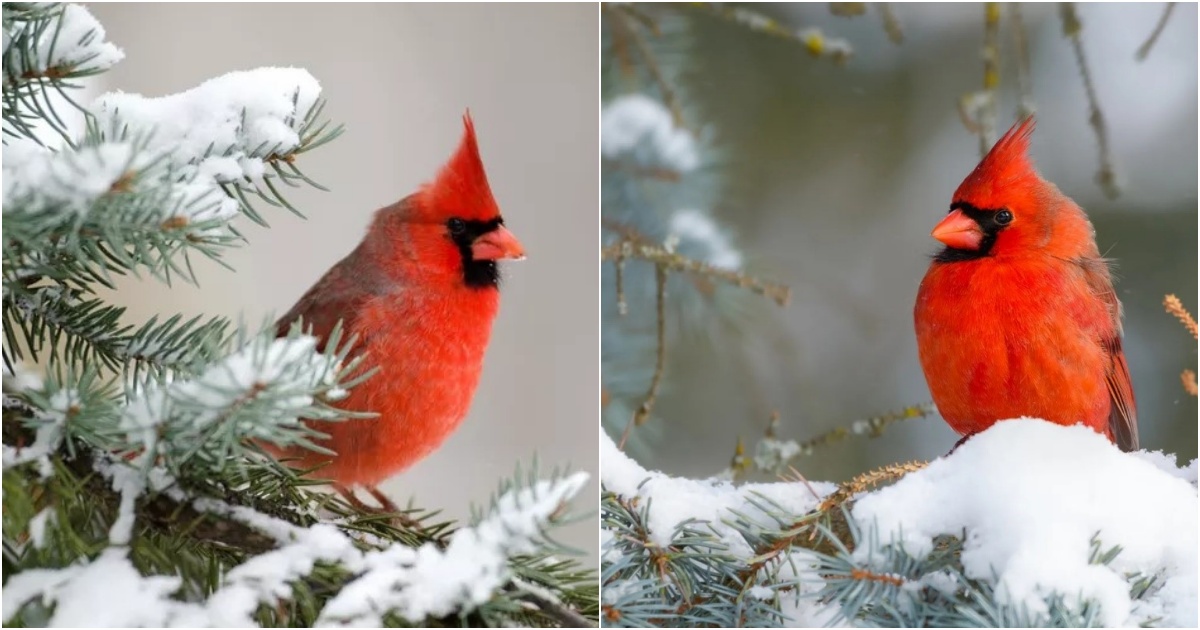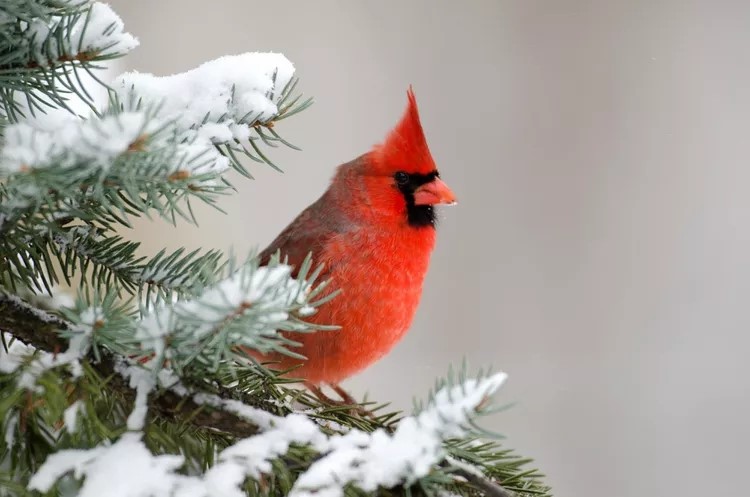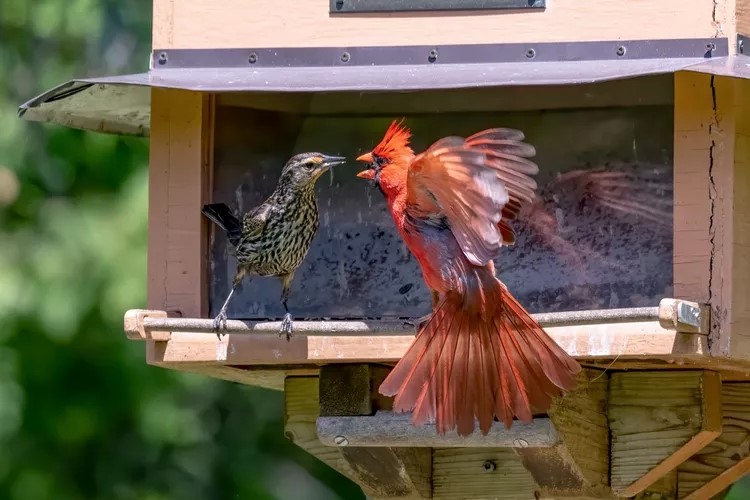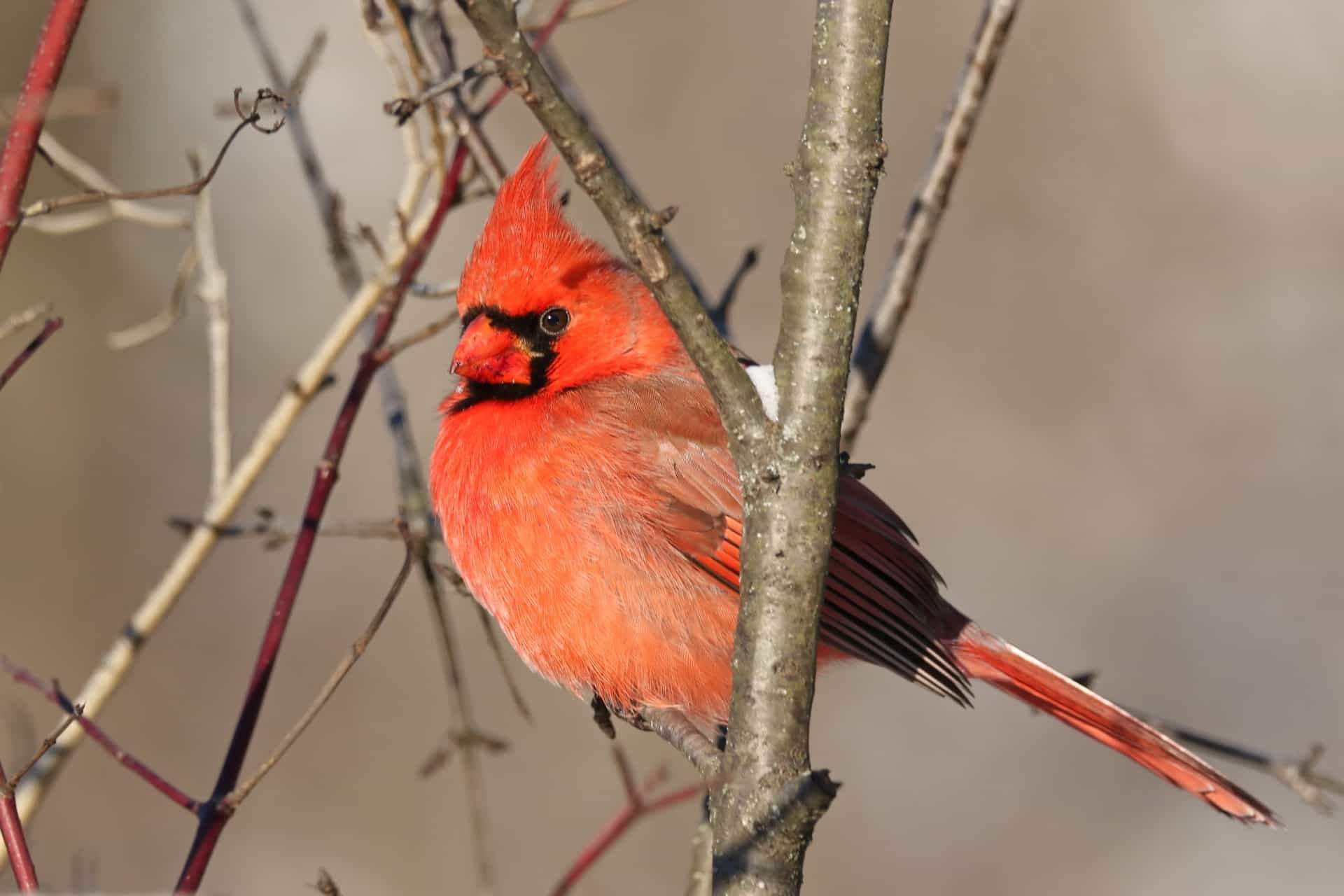Why the Northern Cardinal Is a Favorite Winter Bird

These beautiful songbirds won’t leave home just because it gets cold.

Everyone enjoys watching the beautiful Northern Cardinal, whether an amateur bird watcher or a seasoned ornithologist. Colorful and musical, this lively and popular songbird (it is the state bird of seven states) won’t leave home just because it gets a bit cold down South.
Our region is home to many birds who are permanent residents throughout the year. The mourning doves, bobwhites, goldfinches, and various types of hawks and owls are just a few types of fowl that stay close to home in the winter. None, however, are as eye-catching as the bright red Northern Cardinal. So while it may be too blustery for you to go outside, pour a mug of coffee, sit by a window, and watch these beautifully colored cardinals light up the winter sky. Here’s a list of why Northern Cardinals are some of the South’s (and country’s) favorite birds.
Cardinals Brighten a Winter Day
Unlike other types of birds, the Northern Cardinal does not migrate during the winter. Their brilliant red plumage makes them easy to spot and fun to watch as they hunt and play in the cold. Even the more subtly colored females, with lovely red highlights in their light brown feathers, are visible when flitting among the branches. Cardinals are as beautiful perched on a barren tree branch as they are sitting amongst the bright evergreen branches.
Cardinals Make a Joyful Noise
Unlike many other songbirds in North America, both the male and female cardinals can sing, and they have several different songs they will perform throughout the day.
In most songbird species, it is only the male that is capable of singing. When a female cardinal sings from the nest, it usually means she’s telling the male she needs more food.
What Makes a Cardinal a Songbird?
Northern cardinals are part of a large group of birds classified as songbirds. As to what defines a songbird, according to Encyclopaedia Britannica, “Songbird [is] any member of the suborder Passeri (or Oscines), of the order Passeriformes, including about 4,000 species—nearly half the world’s birds—in 35 to 55 families.”
The Audubon Society states that all songbirds “have exceptional control of a special organ called the syrinx,” and oscines also learn their songs. The two essential functions for this are defending territory and attracting a mate—other than instinct alone.
Cardinals Are Good Providers
The female cardinal builds the nest while the male keeps a close eye on her and the surrounding territory for predators and other males. The female will be the only one incubating the eggs. The male’s duty during this time is to feed her at the nest and protect their territory from intruders. Once the young hatch, both mother and father cardinals feed their young.
Cardinals Are Loyal to Each Other (Usually)
If you watch cardinals for any length of time, you may see a ritual referred to as mate-feeding. The male will pick up a seed, hop over to the female, and the two will quickly touch beaks as she takes the food. Mate-feeding continues through the egg-laying and incubation phases of breeding. Typically Northern Cardinal pairs remain together the whole year and, often but not always, pairs stay together until one dies. At this time, the surviving mate will look for another partner.
Cardinals Are Year-Round Neighbors
Because these birds do not typically migrate—though they may travel if food becomes scarce—you can enjoy Northern Cardinals in your yard throughout the year, including the winter months.
To keep them from moving on, make sure your property has adequate shelter and nesting sites, as well as food sources. Cardinals may look showy, but they prefer discreet, secluded areas for shelter and nesting. Thickets of dense vines and shrubs provide good cover, so the birds feel secure.
Some of their preferred plants include blueberry, clematis, grapevines, and hawthorn. Evergreens such as pines and spruces also provide comfortable winter shelter. Essential nesting materials like small twigs, pine needles, and grass clippings will encourage cardinals to build nests nearby, though they will not use bird houses.
Keep a supply of songbird feed available when natural food sources get slim—among the food items cardinals enjoy are sunflower and safflower seeds, cracked corn, and fresh berries.
You might see a male Northern Cardinal attacking a window during the spring. It’s attacking his reflection in the glass because he will fiercely defend his breeding territory from intruding males.







